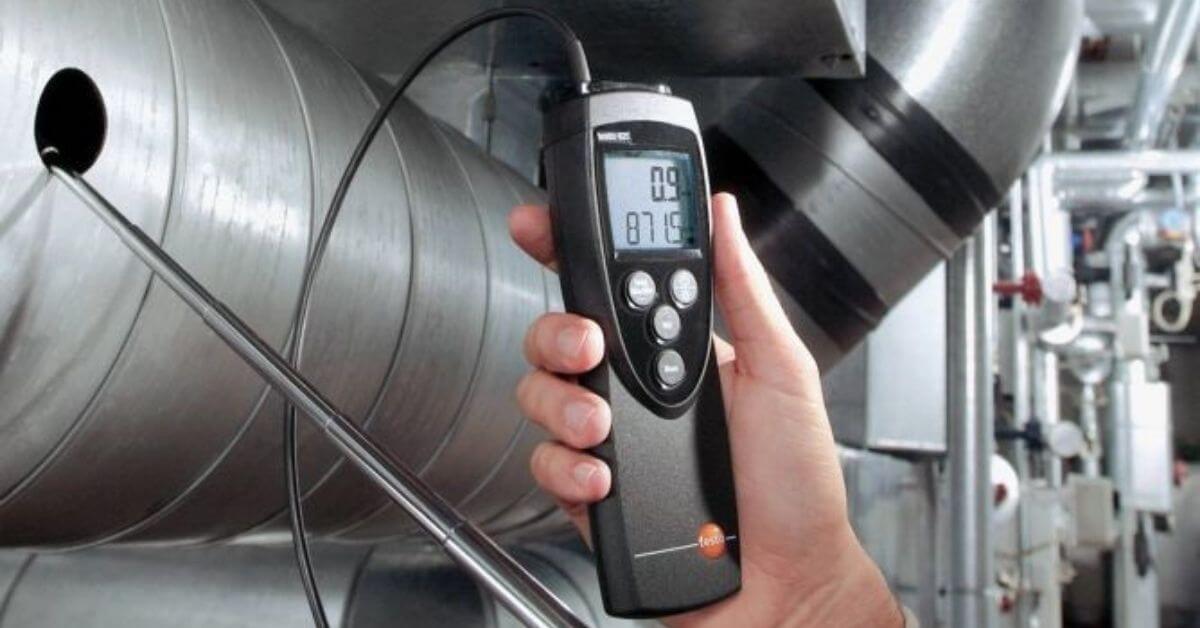Anemometers are measuring devices used to measure the speed of airflow in the atmosphere, in wind tunnels, and in other gas-flow applications.
It is most commonly used to measure wind speed with the help of revolving cups.
Seems interesting, right?
Let’s take a sneak peek at what anemometers are and how are they work?
Table of Contents
ToggleWhat Is An Anemometer?
An anemometer is a device that is helpful in measuring wind speed and wind pressure. It is a type of wind meter that basically measures the velocity and volumetric flow of the wind.
The newly developed anemometers are small handheld devices comprising of a turbine and a digital screen.
Anemometers wind speed measuring device measure wind velocity by first facing your device towards the source of the wind.
Wind speed is usually calculated with the help of an anemometer. It is read by a counter fixed on the unit of the wind turbine.
The only click is to know the cross-sectional area. Once it is known, you can use this to calculate volumetric flow.
What Basis Does The Anemometer Operate On?
Anemometers work according to the theory that when a freely spinning turbine rotates, it is directly proportional to the wind speed. The device thus displays a wind speed measurement with a quick analysis.
What Are Some Uses Of An Anemometer?
Anemometers are helpful for both indoor and outdoor functions and work best when the wind direction remains constant. Typical applications of an anemometer include:
• HVAC Monitoring
• Measuring hoods and airflow equipment
• Water treatment plants
• Exhaust monitoring
• Education
• Anemometers are vital tools for meteorologists who study weather patterns.
• They are also crucial to the work of physicists, who study the way air moves.
• Anemometers are used at almost all-weather stations. Weather radar technology improved a lot so now we can measure wind speed .Wind speeds are helpful in indicating the change in weather patterns, if any, such as an approaching storm, cyclone, heavy rainfall, etc.
Among the different types of anemometers, the laser anemometers used by aerospace engineers and physicists are incredibly efficient. They are primarily used in velocity experiments. Laser anemometers are helpful in calculating the wind speed around cars, airplanes, and spacecraft.
Anemometers are primarily measured to determine the wind speed and direction.
Meteorologists are able to calculate wind pressure using these sets of data.
Wind pressure is the force exerted on Anemometers that help engineers make these vehicles more aerodynamic.
The most common and traditional type of anemometer has three or four cups attached horizontally across the arms. The arms are attached in a vertical rod. As the wind starts blowing, the cups rotate, making the rod spin. The stronger the wind blows, the faster the rod spins.
What Do Anemometers Count, And How Do They Calculate Readings?
Any anemometer counts the number of rotations used to calculate wind speed.
As wind speeds are not consistent, they are usually considered over a short period of time.
Different anemometers calculate wind speed in different ways.
For instance, a hot-wire anemometer takes advantage of air cooling a heated object when it flows over it. With the faster speed of the wind comes the power required to keep the wire at a constant temperature.
Whereas a tube anemometer uses air pressure to determine the wind pressure or speed. This means wind speed can also be determined by measuring air pressure.
The tube anemometer basically measures the air pressure inside a glass tube that is closed at one end. Wind speed meter calculates wind speed by comparing the air pressure inside the tube to the air pressure outside the tube.
How Does An Anemometer Work?
If you see, the most common and traditional type of anemometers has three or four cups attached to their horizontal arms.
These arms are attached to a vertical rod placed below it and mounted by the entire structure.
The cups start rotating when the winds blow, further spinning the vertical rod.
The speed of the wind determines how faster the rod can spin.
The anemometer thus is able to count the number of rotations, or turns, which is further used to calculate wind speed.
A similar type of anemometer counts the revolutions made by windmill-style blades.
Related article-
A quick review of the Kenwood NX1200 UHF digital Radio
Getting Started Guide for Laser Cutting or Laser engraving
